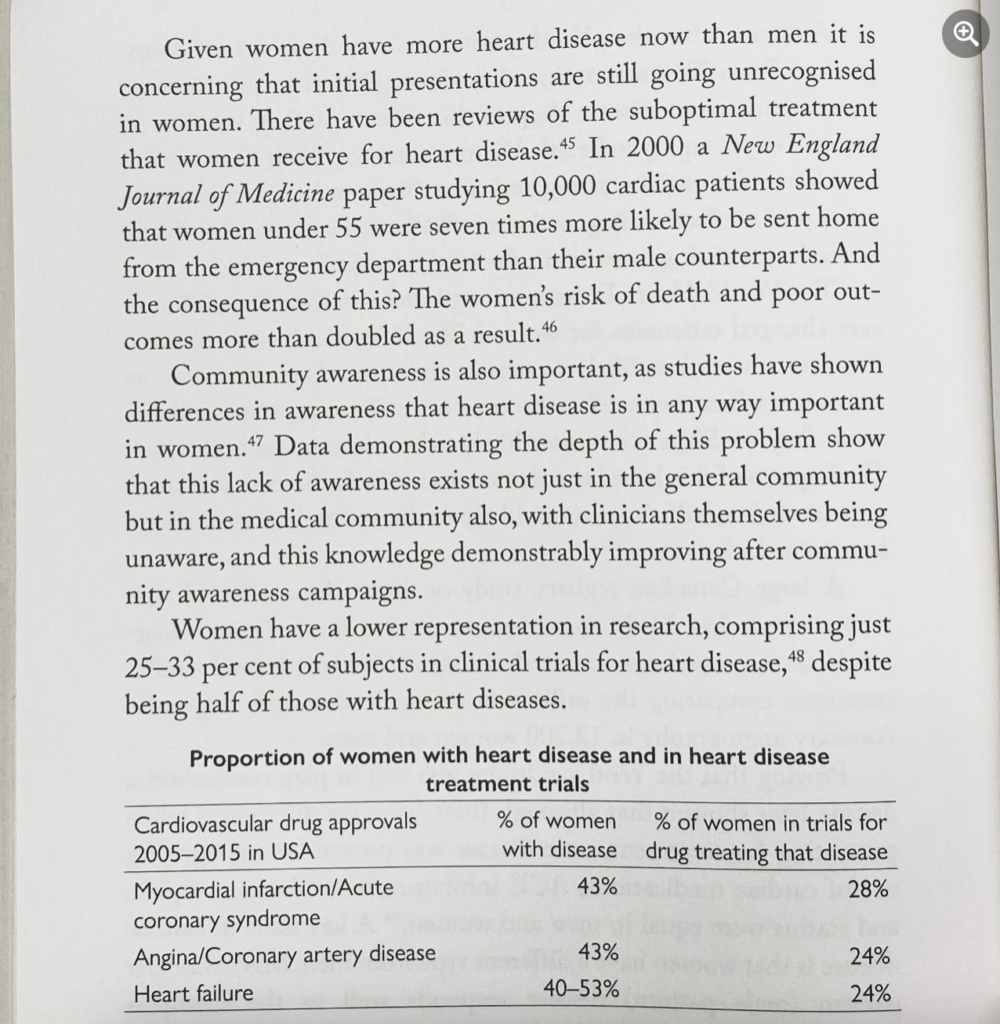Final post from “Secrets of women’s healthy ageing” which discusses the sex differences in health management.
Final post from “Secrets of women’s healthy ageing”!
Sex differences in health management:
Healthcare management has also varied between the sexes. The historical “diagnosis” of ‘hysteria’ was the label applied to behaviours seen as ‘unreasonable’ or ‘excessive’. It was almost exclusively a female diagnosis. The word itself stems from the Latin word for uterus. The psychiatric manual of diagnoses (“DSM”) only dropped the diagnosis in the 1980s – a few years after homosexuality was removed as a psych condition. As the author says “women get psychiatric diagnoses while men get tests”.
Unfortunately these biases still seem to exist today. Emergency services/paramedics are less likely to bring severely injured women to hospital – 49%, compared to 62% of men! Women are also more likely to be disregarded, under diagnosed, misdiagnosed (by 50%) and undertreated for cardiac (heart) disease in comparison to men. Another key issue is that women usually present with a different type of cardiac disease than men. Macrovascular pattern disease in men responds well to current therapies. Whereas microvascular patterns of disease – the female predominant pattern lacks trial data, meaning there isn’t any guided therapy for “female ischaemic heart disease such as plaque dissection, distant embolisation and diffuse microvascular disease”. Given women have more heart disease now than men, this is concerning.
Pregnancy
There is limited research examining the impact of lifestyle health and long-term outcomes after pregnancy. Some conditions that occur in pregnancy e.g. pre-eclampsia & gestational diabetes are demonstrated to raise the risk of later-life coronary heart disease.
Stroke
Caused by a bleed, or blood clot that blocks an artery in the brain, symptoms in men are usually associated with a weak arm or loss of speech. However in women symptoms can include a change in conscious state, generalised weakness, fatigue/drowsiness, incontinence or pain.
Compared with men, women have more benefit from the key treatment tissue plasminogen activator (tPA) than men, but are approx 10% less likely to receive tPA within 3 hours of onset of symptoms. It’s not surprising then that women are more likely to have worse outcomes after stroke than men.
Inflammatory diseases
Women are particularly predisposed to inflammatory diseases. People with rheumatoid arthritis (RA) have a 50% higher risk of heart attack, heart failure and artery blockages. “Almost all chronic diseases of ageing have an inflammatory component.” Despite similar symptoms with irritable bowel syndrome, men are more likely to be referred for x-rays while women are prescribed anti-anxiety medication and given lifestyle advice.
Pain
Again, “women are more likely than men to receive a psychiatric diagnosis when they report pain symptoms.” Research that measures women’s response to pain relief is historically lacking, but that’s set to change as from 2016 animal studies for new treatments must now include male and female mice.
Health & prevention
The WHO says that 80% of chronic health conditions are preventable. As women are more likely to be impacted than men, the challenge for this century is to go about preventing these.



